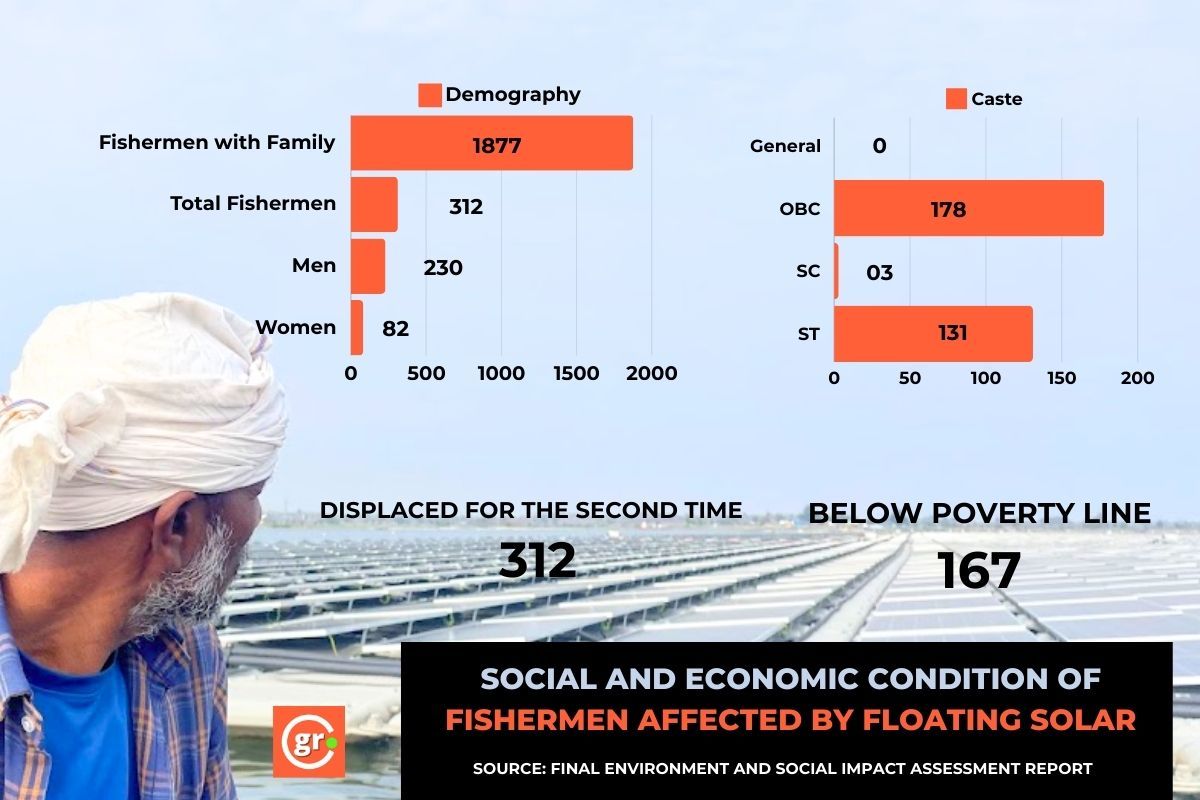हिंदी में पढ़ें। Standing on his boat, Subhan Singh drifted his finger towards the floating solar panels. These panels make the ambitious Omkareshwar floating solar project. He quickly looked at us, and said,
“Earlier we used to fish there… we used to get maximum fishes at that spot. We used to lower the net, and wait… Eat food right here on the island… We spend our whole day here. Sometimes we got up to 50 kilos of fish in a day. But now the solar plates have been installed… our boats cannot go there”
Video Report on Omkareshwar Floating Solar
This 600 MW floating solar project is developed on the backwaters of Omkareshwar dam in the Khandwa district of Madhya Pradesh. For Rs 5000 crores, this 600 MW capacity project will be completed in two phases and is constructed under the Ultra Mega Renewable Energy Power Park (UMREPP) scheme of the Central Government. 1877 members of the fisher community are reported to be affected by the project. Out of 6 lakh 20 thousand total solar plates to be installed in the project, 2 lakh 2 thousand plates will be installed in Subhan Singh’s village Ekhand, alone. Through this article, we report the on-ground realities from one of the affected villages: Ekhand.
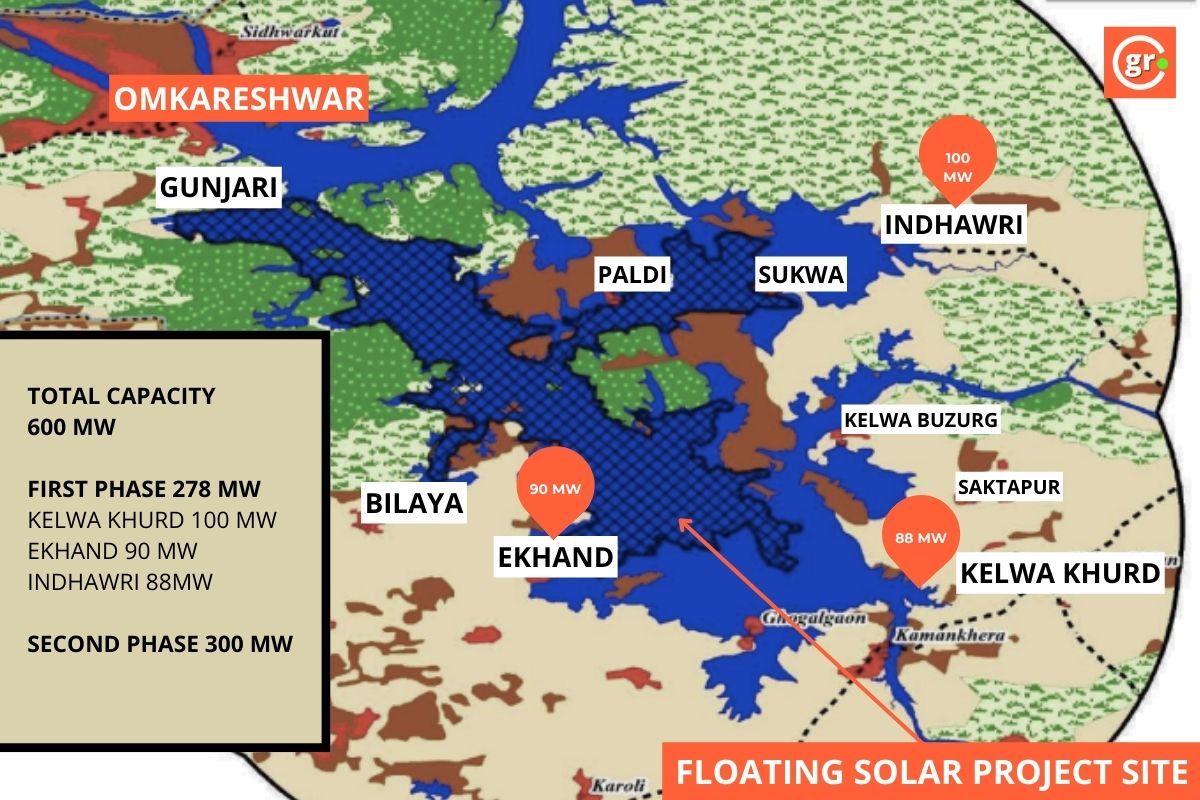
‘We have been evicted from our home’
Subhan Singh’s village ‘Ekhand’ is one of the three villages adjacent to the Omkareshwar Dam’s Cauvery branch. The solar panels are installed in 21 sq km of this branch, making this project India’s largest floating solar power plant. However, this installation has affected the livelihood of more than 312 fishermen, 1877 people in total. Important to note that most of these people lost their homes and land during the construction of the Omkareshwar Dam in the early 2000s. And, as an alternative they learned fishing.
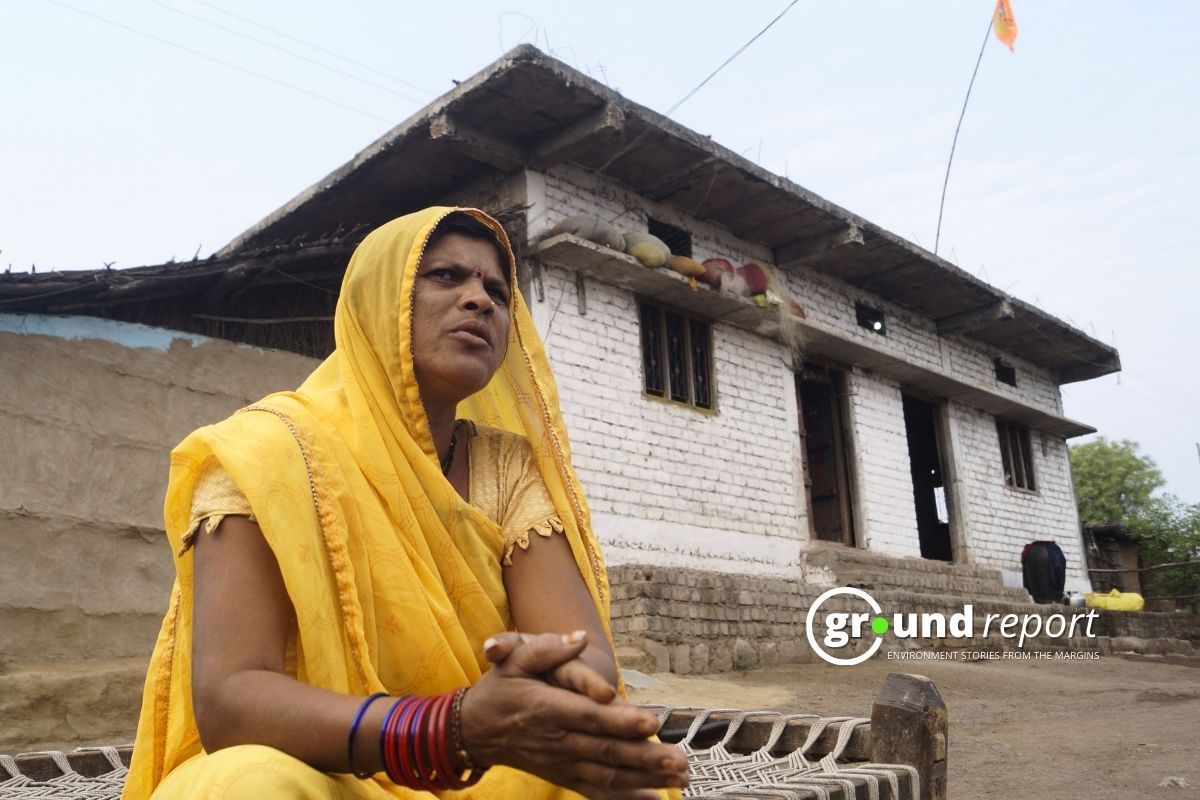
Subhan Singh’s wife Geeta says,
“Now where do we fish? When we cast nets, the company cuts the nets. We are not educated… we don’t know any other work… we only know how to fish. The work has been affected since August last year (2023)… so how do we raise our children?”
Geeta is one of the 82 women affected by the project. She learned fishing from her father and later helped her husband (Subhan Singh) in this work. She goes fishing alone in the absence of her husband. Geeta claimed they were making decent economic progress, but the project has changed their fates.
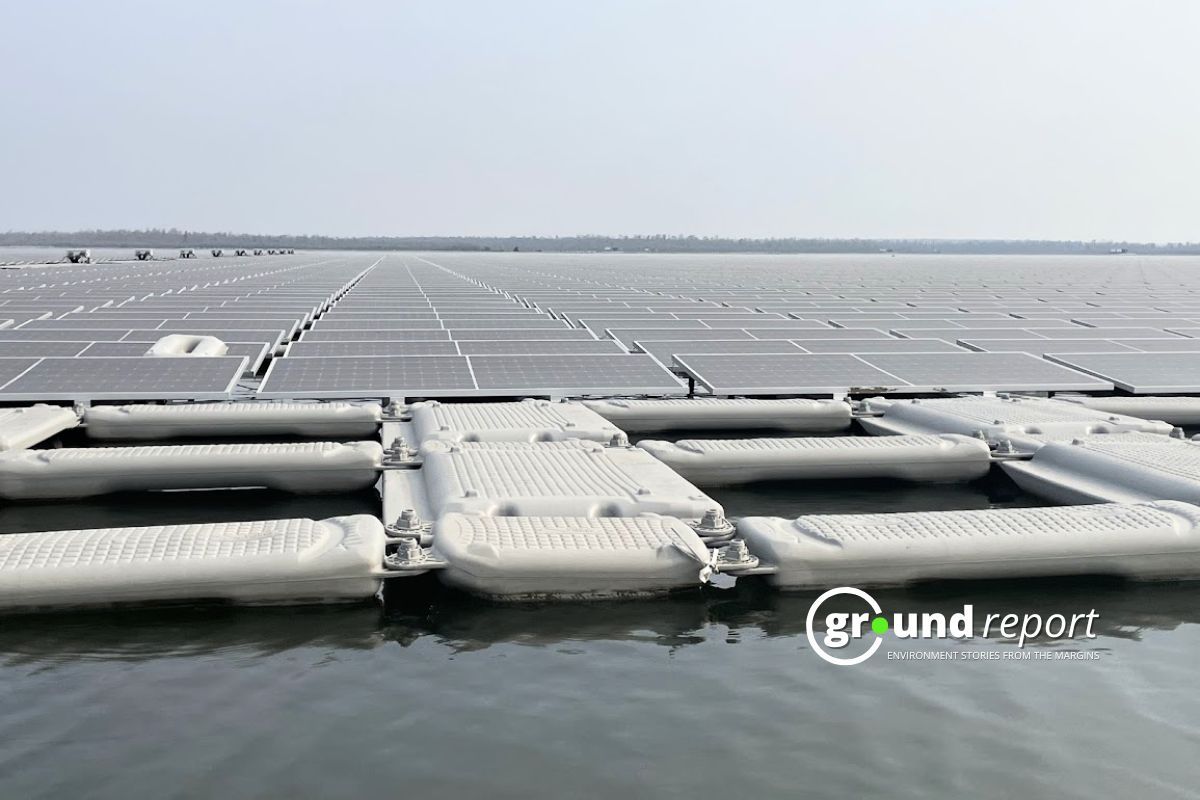
Interestingly, the final social and environmental impact assessment report of the Floating Solar Project acknowledged the impact on the livelihood of 312 fishermen from six villages namely Gunjari, Bilaya, Chhota Ekhand, Ekhand, Indhawari and Saktapur. Furthermore, the report mentions that these families don’t have any other means of employment. According to the same report, almost all the 312 affected fishermen fall in the vulnerable category and will be displaced the second time. The report emphasises formulating and implementing rehabilitation plans for the affected people.
But, is any rehabilitation plan implemented on the ground? Our visit notes that as negative.
Displacement
After multiple cancelled appointments, a senior official of project implementation company Rewa Ultra Mega Solar Limited told Ground Report,
“We have installed this plant in 12 square km. Even after that, there is still a lot of space left in the reservoir. Therefore, the question of livelihood crisis or displacement does not arise. This is the personal ambition of some people. We had also taken consent from the fishermen committee. We did not started any project all at once.”
The senior official refused to comment on the non-implementation of the rehabilitation plan. Addressing the above point by the official, Alok Agarwal, associated with Narmada Bachao Andolan, explains,
“Each committee has a working area… Hence, fishermen can legally fish only within an 8-kilometer radius. Solar plates have been installed in the working areas of 6 fishermen committees of the affected villages. When you tell them to go far away and fish, they will have to go to another village and get themselves registered again. When I go to another village, I get physically displaced and when I go to another place for livelihood, economic displacement also happens, so you [government] have to do the rehabilitation.”
The essence of Alok’s point can be understood from the statement of Geeta, she says
“Our life has been spent on water and boat, it seems that we have become removed from our home.”
Alok further says,
“We have been fighting for Narmada Bachao, in such cases the Supreme Court has propounded a principle that rehabilitation should be completed six months before any displacement takes place… only after that the project work can start. But, here more than 350 fishermen of 6 fishermen societies were displaced from their livelihood and no restoration took place.”
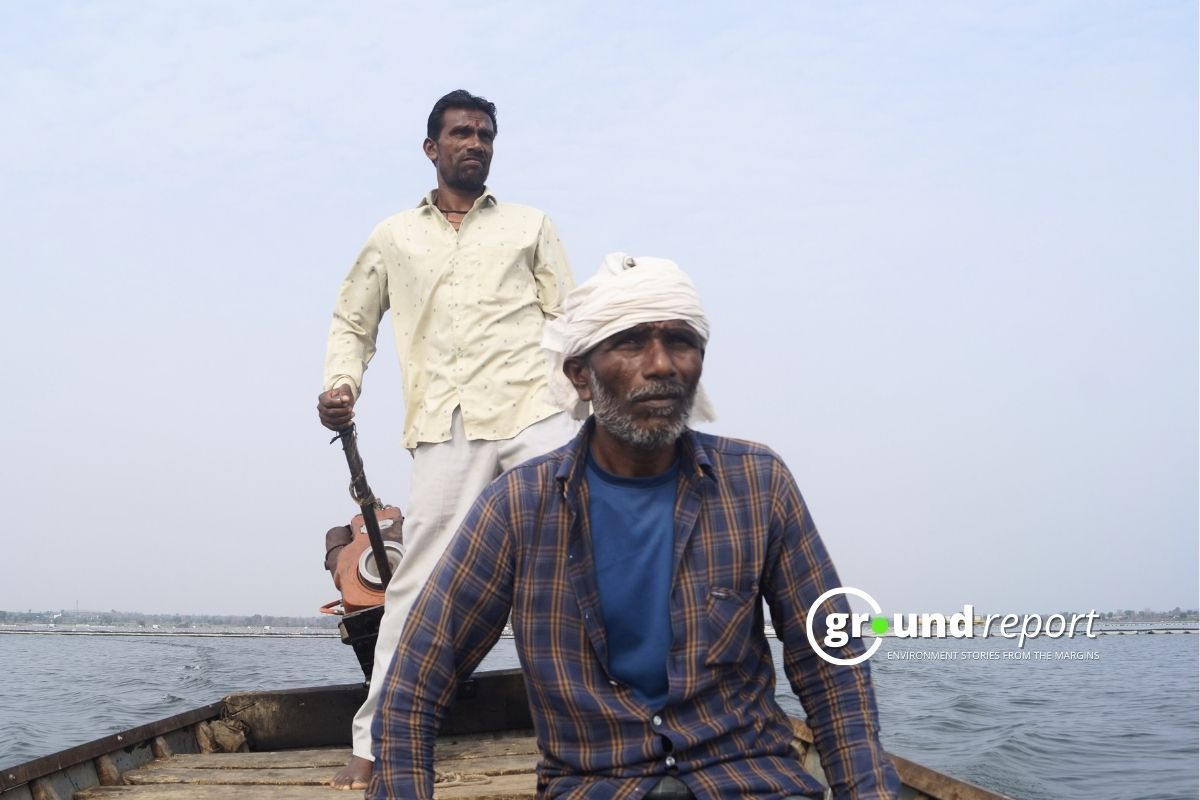
Livelihood Restoration Plan on paper
Livelihood Restoration Plan was designed for 312 affected fishermen with an estimated budget of more than Rs 5 crore. The restoration plan includes a subsistence allowance of up to Rs 36,000 for each affected person, one-time additional financial assistance of up to Rs 50,000 to all vulnerable project-affected fishermen, and permanent jobs for 150 fishermen. Furthermore, skill development training for 162 fishermen and the purchase of necessary equipment to establish self-employment.
But, there is no on-ground implementation of such a plan.
Subhan Singh says he has no problem with the floating solar project.
“The only regret is that we were not even asked before installing solar plates on our reservoir. Giving compensation is a matter of distance.”
On the issue of compensation, Geeta says,
“If we get proper compensation, we can dig a pond anywhere and do fish farming and raise our children. The government should think about us.”
Deepak Verma, associated with the fishermen association of Omkareshwar, says,
“A survey was conducted before the work of the project started. Then we were told that 150 people would be given permanent employment, and your children would get a good education. But after the completion of the project, the company people did not come, nor did we get any compensation. Thus, we filed a case.”
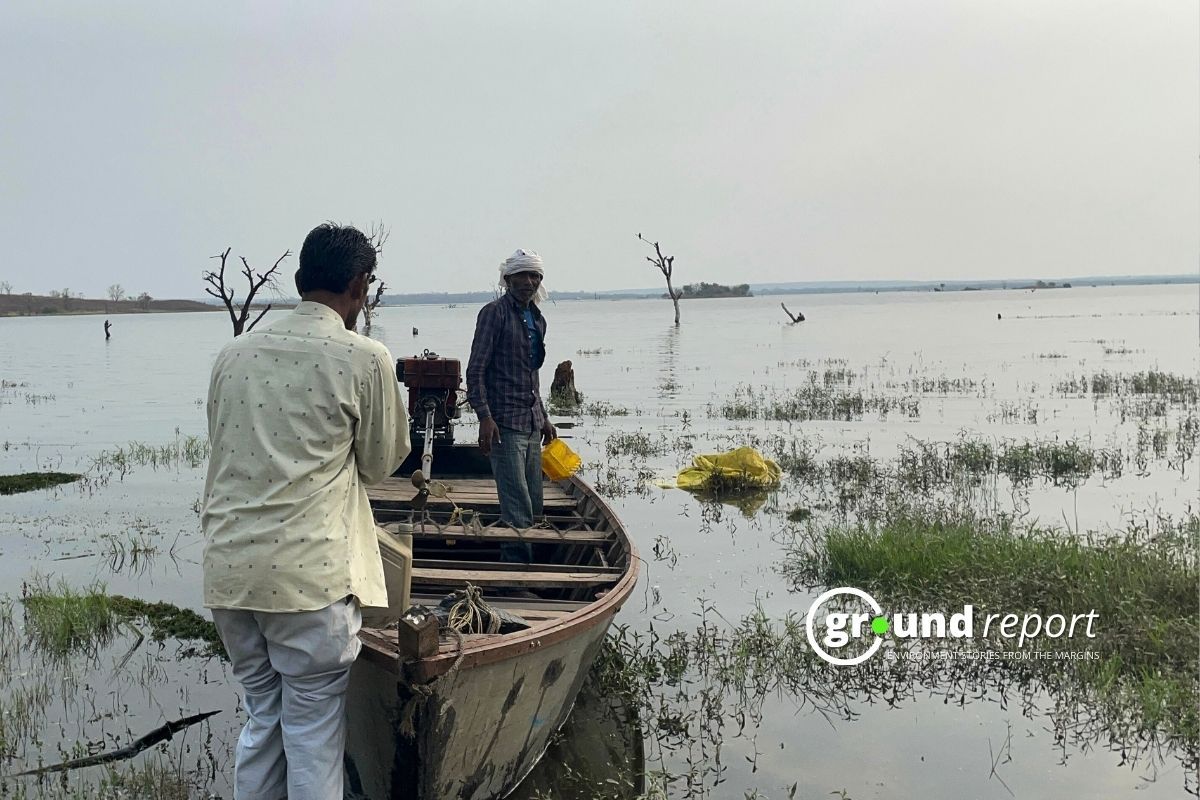
Case in the High Court
Affected fishermen’s ‘Maa Satmata Sailani Fisheries Cooperative Society’ and ‘Maa Kajalrani Displaced Tribal Fishermen Cooperative Society’ have filed a petition in the Jabalpur High Court for their rights as there is no arrangement for rehabilitation.
On this, Alok says,
“Two things have been placed before the court. Firstly, the affected people should be given permanent jobs. [Secondly] rehabilitation benefits should be given under the provisions of the Land Acquisition Act 2013.”
In the hearing held on February 12 in this matter, the High Court issued a notice to the state government and Rewa Ultra Mega Solar Limited and asked them to respond. The High Court has not stopped the work on the project. However, they have clearly stated that the future of the project will depend on the final decision of the court.
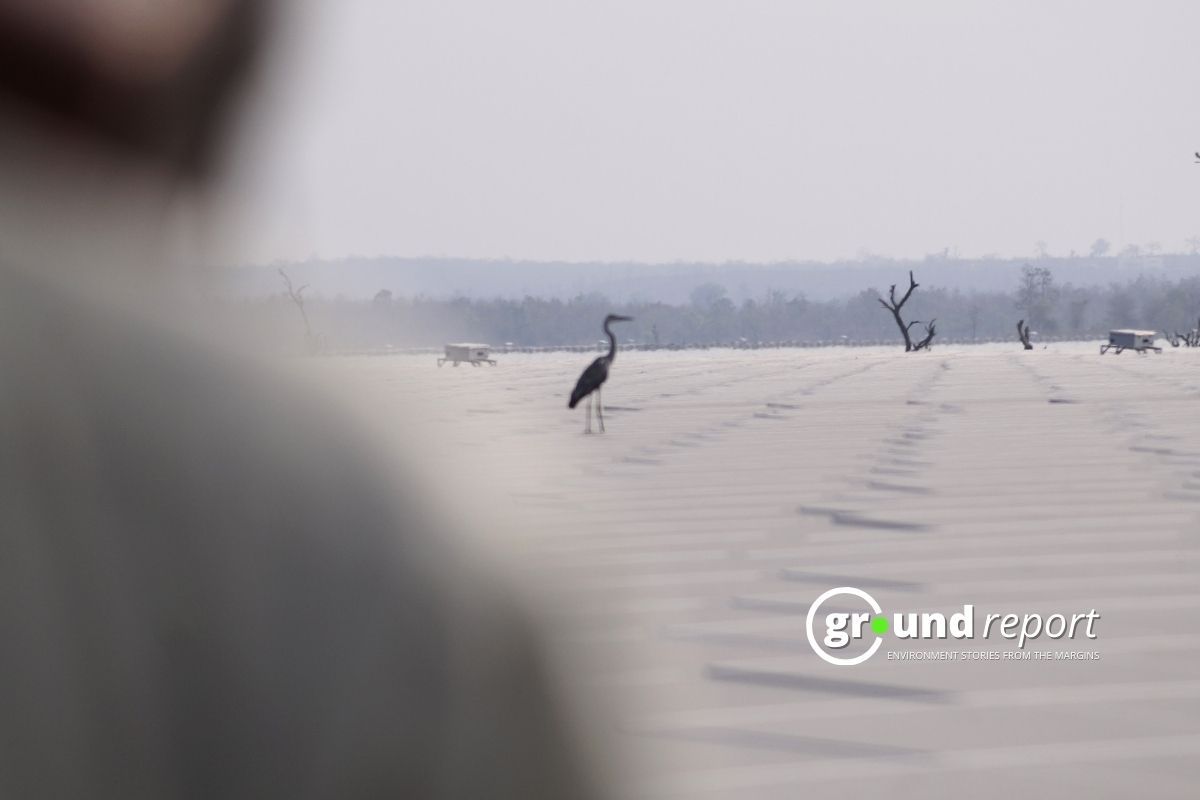
Floating solar and storm
Subhan Singh stirred his diesel boat towards the project site, Solar plates are seen floating far in the water. First floaters have been placed on the surface of the water on which solar plates have been tightened. Floaters are anchored together and hooked to the surface to prevent damage in case of strong currents or storms. Referring to the incident of April 9, Alok Aggarwal raises questions on the possibility of floating solar surviving in a heavy storm.
In fact, on Tuesday, April 9, during the summer storm at a speed of 50 kilometres per hour, the solar plates of the floating solar unit located in Indhawadi village were blown away and gathered in one place. According to information received from Rewa Ultra Mega Solar Limited, the damage caused by the storm has been estimated to be very low, around 0.01 per cent. The company explained that the damaged plates were not fastened properly.
Alok says, “Here, storms of even greater intensity keep coming, it remains to be seen how long this floating solar will be able to survive in the era of extreme weather events.”
Subhan Singh turned the boat against the floating panels, and towards home. He said,
“We will not cause any harm to these solar plates. When we will get proper compensation we will make some other arrangements for our livelihood.”
While the fisher community awaits the High Court decision, the second phase of the project will be awarded after the elections, according to Rewa Ultra Mega Solar Limited.
Follow Ground Report for Environmental News From India. Connect with us on Facebook, Twitter, Koo App, Instagram, Whatsapp and YouTube. Write us on GReport2018@gmail.com and subscribe our free newsletter.

